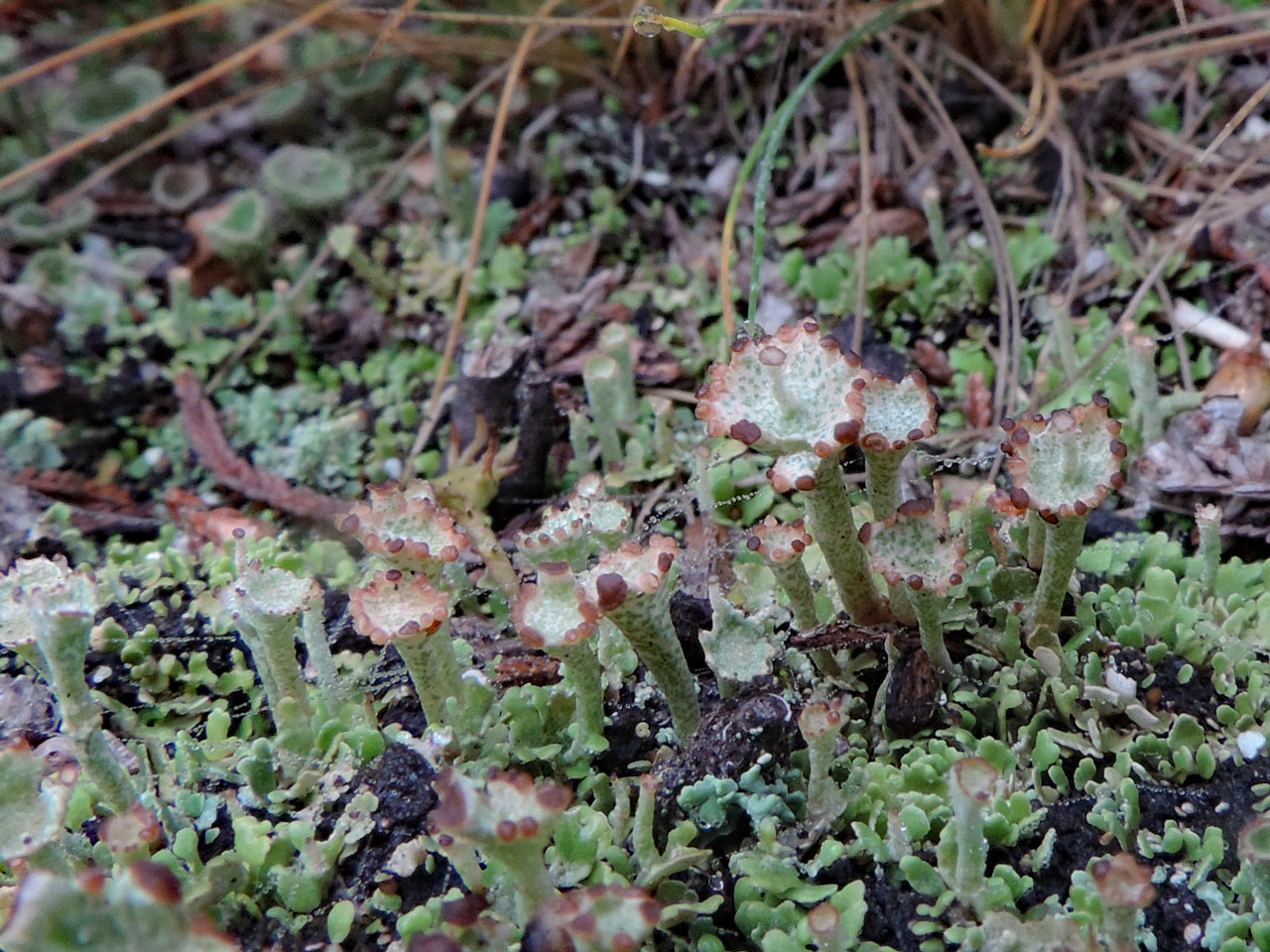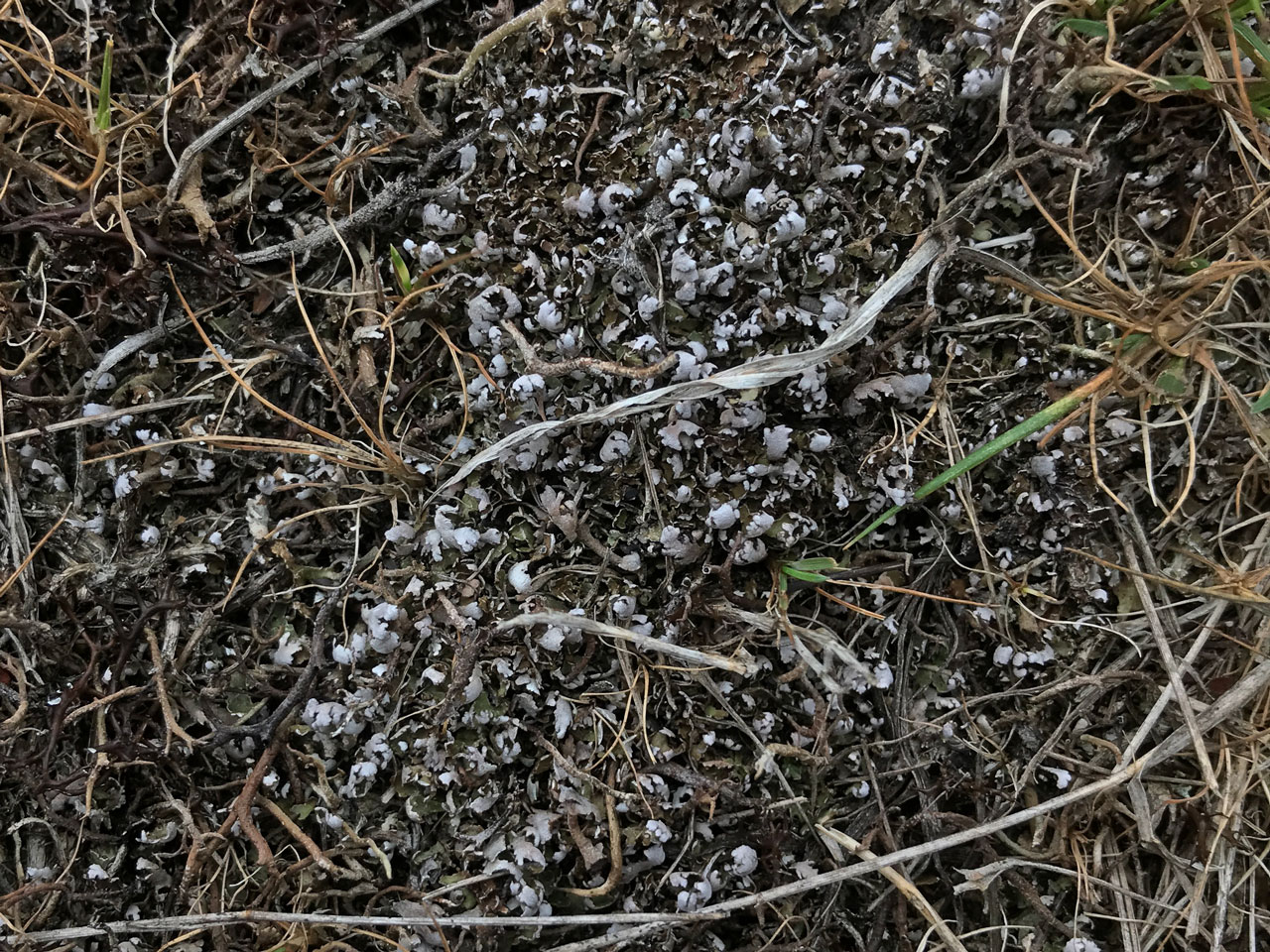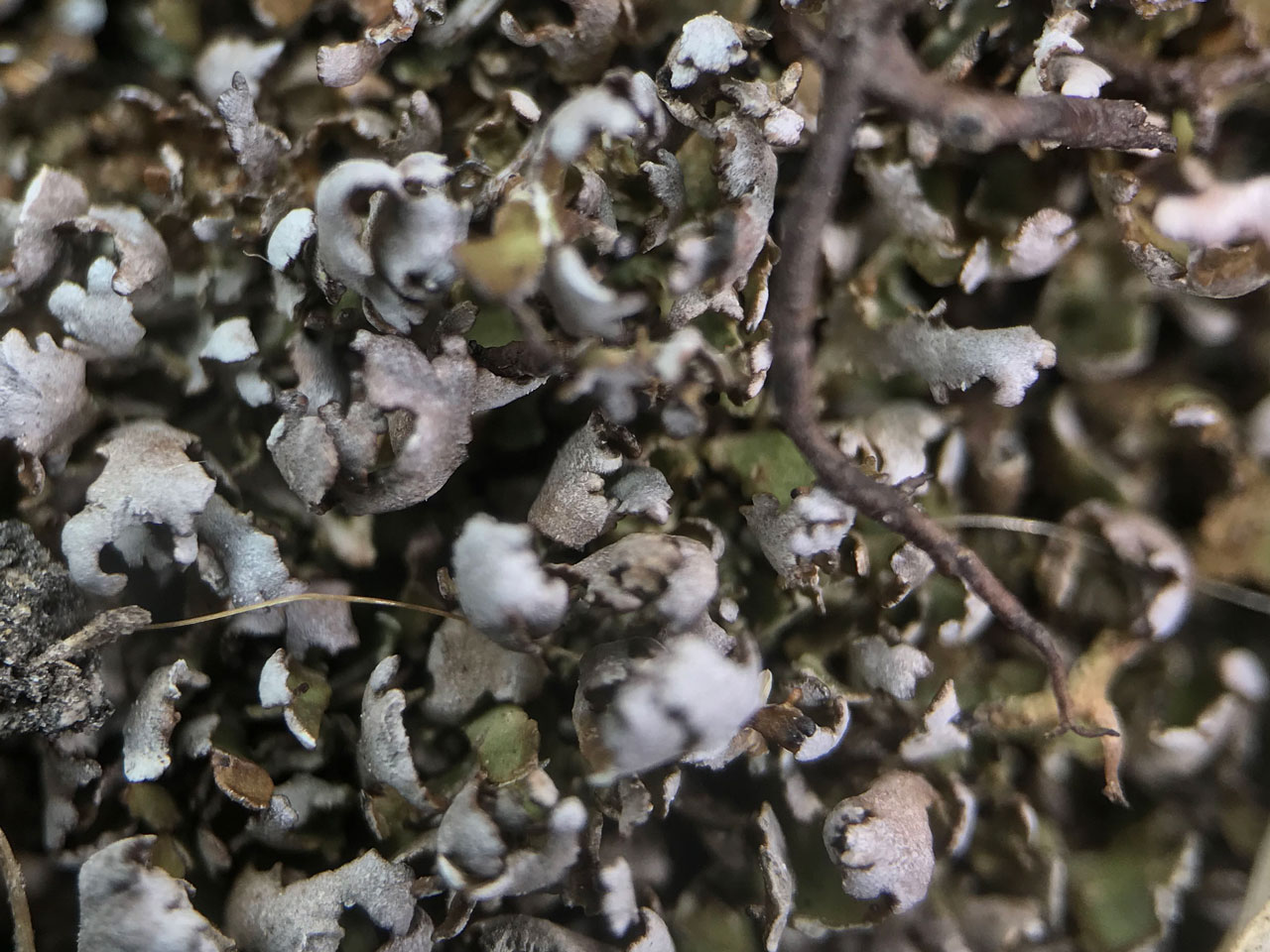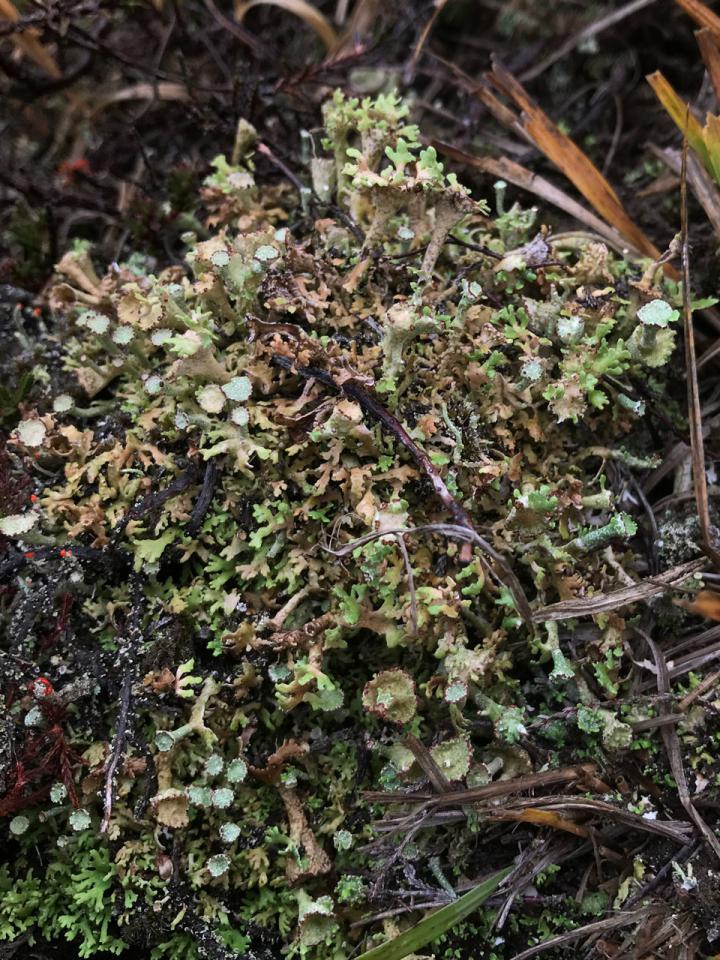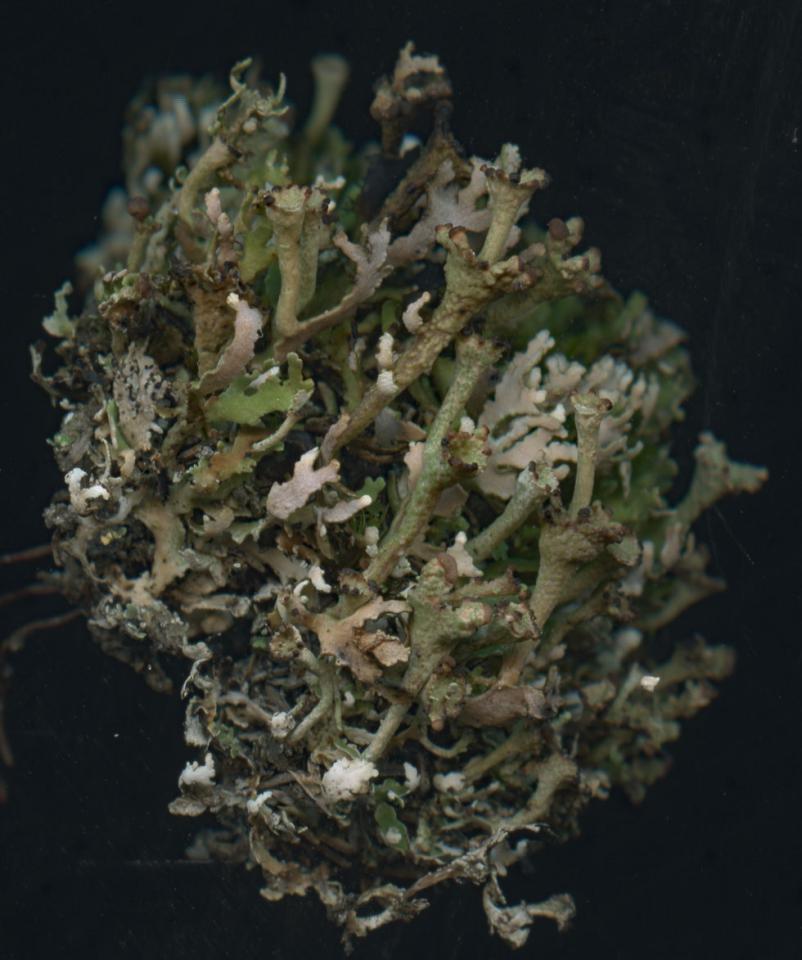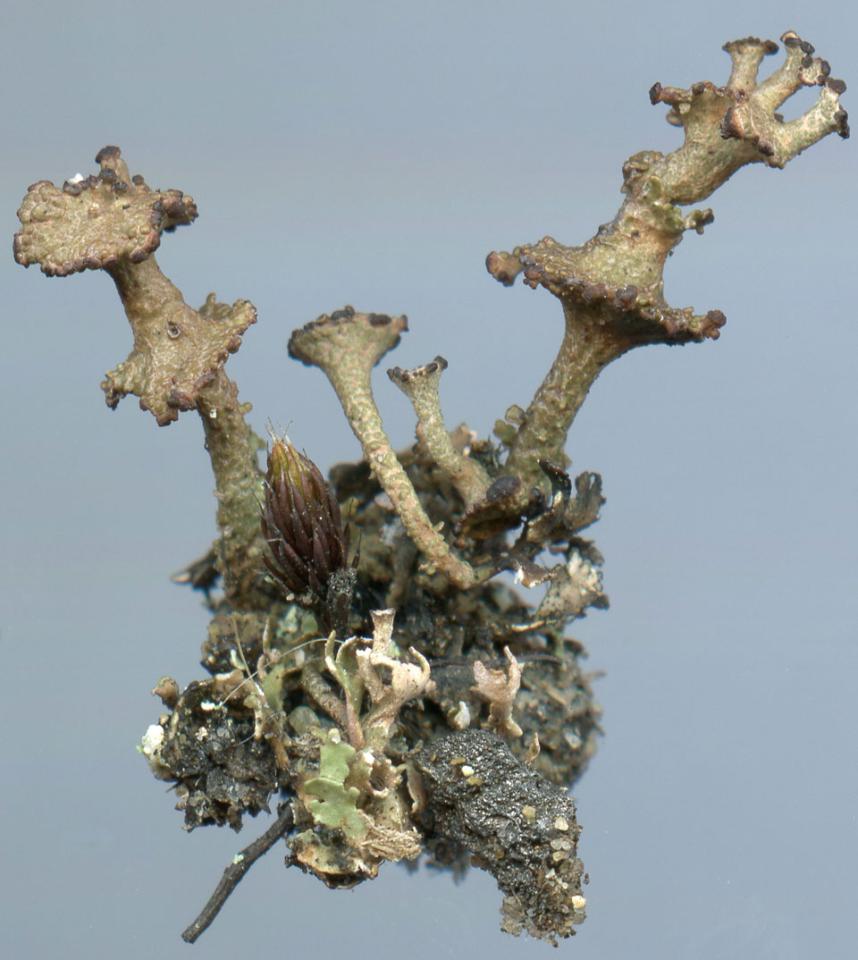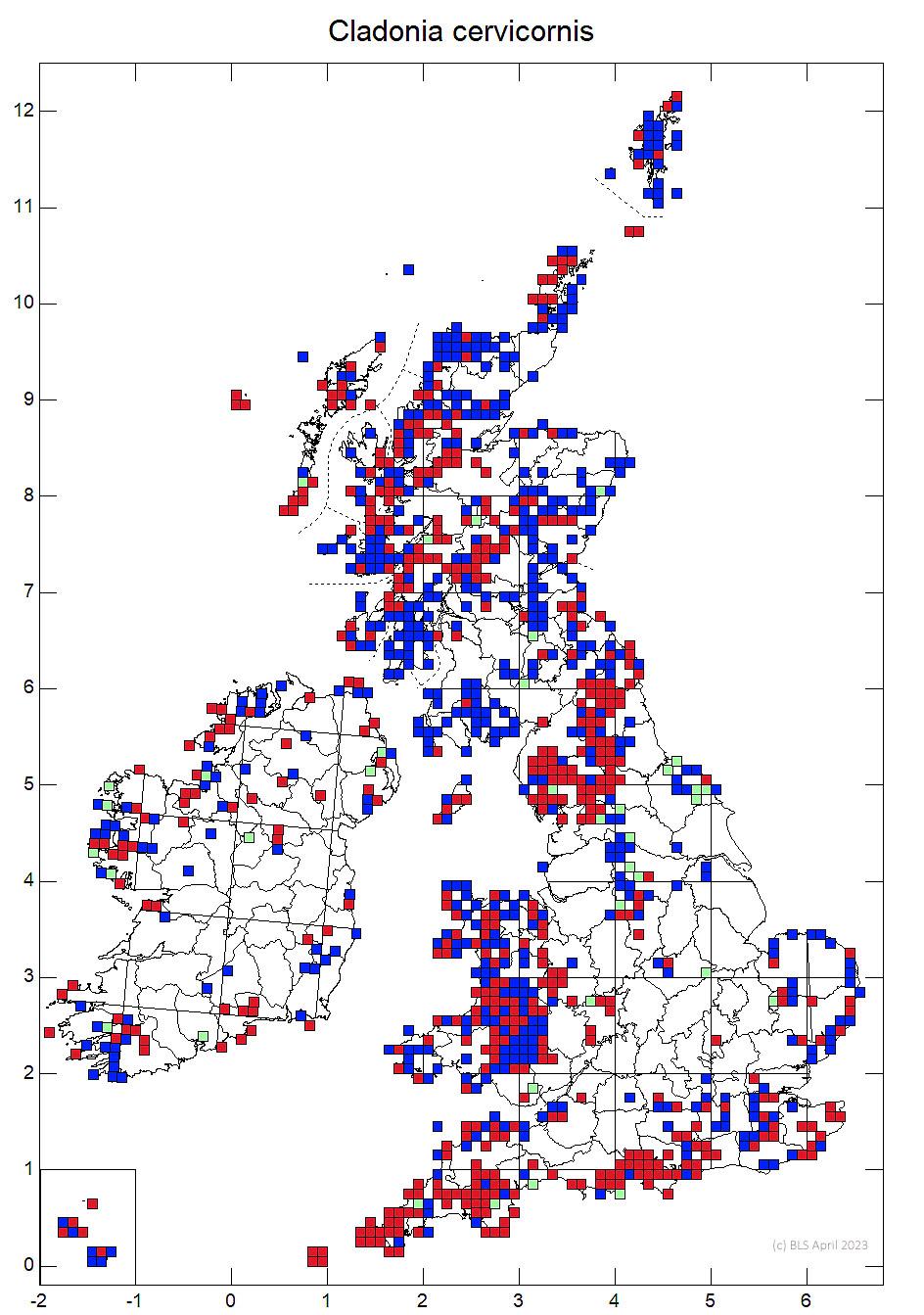Cladonia cervicornis
A widespread Stacking Cup Cladonia, of mildly acid and basic soils, especially on coastal dunes and heathland. Often occurring as sterile mats, which have greenish brown upper surfaces, with the white undersides typically tinged grey-brown. The podetia do develop frequently and have shallow ± regular cups, that proliferating irregularly from the centre, sometimes forming several tiers of proliferation.
The closely related C. verticillata, more regularly has tiers of cups, but well-developed C. cervicornis can also form several layers of proliferation and the simple presence of tiers is not a reliable separation. The longer, more indented basal squamules of C. cervicornis provides a more definitive separation, combined with the often less elegant proliferations.
Podetia to 1 cm tall, with shallow ± regular cups, corticate, areolate, often sparingly squamulose and proliferating irregularly from the centre, sometimes forming several tiers of proliferation, originating from the centre of the cup, without soredia. Basal squamules often dominant, often well-developed, 2–3 (–5) mm long, ± rounded, the margins indented to dissected, reflexed when dry, mostly contiguous and forming cushions; upper surface grey-green to grey-brown; lower surface white, often tinged grey-brown; soredia absent. Apothecia rare, brown, on scyphus margins. Pycnidia frequent, brown, on scyphus margins. Thallus C–, K–, KC–, Pd+ red, UV– (fumarprotocetraric acid, rarely ± atranorin).
A striking morph with bifurcating basal squamules appears widespread in the south and west, there is a similar morph in Cladonia foliacea, which was described as C. angustiloba, but has been found to be genetically similar to normal C. foliacea. This form of C. cervicornis may be a similar environmental response (and similar material in Macaronesian has been named Cladonia microphylla, but sequencing has also found this to be genetically similar to normal C. cervicornis (Pino-Bodas et al, 2024)). The angustiloba morph is yellow-green, while the microphylla morph of C. cervicornis is brown-green.
Two related species are Cladonia pulvinata and C. verticillata, which have treated as subspecies of C. cervicornis but are now regarded as separate species. C. pulvinata is likely to be difficult to spot as is is normally sterile, but can be distinguished easily from C. cervicornis by its Pd+ yellow rather than Pd+ red reaction (psoromic rather than fumarprotocetraric acid) and also has broad, ± vertical basal squamules and more slender podetia, when these occur.
Cladonia verticillata differs by the rounded and short basal squamules and podetia with narrower and more regular cups with up to seven layers of proliferation, but well-developed C. cervicornis can form several layers of proliferation and the simple presence of tiers is not a reliable separation. The longer, more indented basal squamules of C. cervicornis provides a more definitive separation, combined with the less elegant proliferations.
Cladonia cervicornis is distinguished from the unrelated C. subcervicornis by the much smaller, more rounded, grey-green basal squamules, the undersides of which are not conspicuously blackened towards the base, and by the K– reaction. See also C. firma and C. symphycarpa. Younger Cladonia phyllophora podetia can be similar to those of C. cervicornis.
Pino-Bodas et al (2024) have separated another distinct related clade which they have named Cladonia teuvoana, which has been recorded from the New Forest, Hampshire and is likely to occur elsewhere. It is similar to C. cervicornis but has small squamules with pure white undersides and a podetia with narrow cups that abruptly widen and with a corticate surface.
On mildly acid and basic soils, particularly on coastal dunes and heathland. Rare in very acid and low productivity soils, where it is often replaced by Cladonia verticillata.

Throughout Britain and Ireland, locally frequent but rare or absent in intensively cultivated lowland landscapes.
Pino-Bodas R, Herrero A, Aptroot A, Søchting U, McMullin RT, Burgaz AR. (2024) Phylogenetic study of the Cladonia cervicornis group (Cladoniaceae, Lecanorales) discloses a new species, Cladonia teuvoana. The Lichenologist. 56:237-258. Link
Pino-Bodas, R., Sanderson, N., Cannon, P., Aptroot, A., Coppins, B., Orange, A. & Simkin, J. (2021). Lecanorales: Cladoniaceae, including the genera Cladonia, Pilophorus and Pycnothelia. Revisions of British and Irish Lichens 19: 1-45. Link
Van Herk, C.M. & Aptroot, A. (2003). A new status for the Western European taxa of the Cladonia cervicornis group. Bibliotheca Lichenologica 86: 193–203. Link
Text by Neil A Sanderson, based on Pino-Bodas et al (2021)

